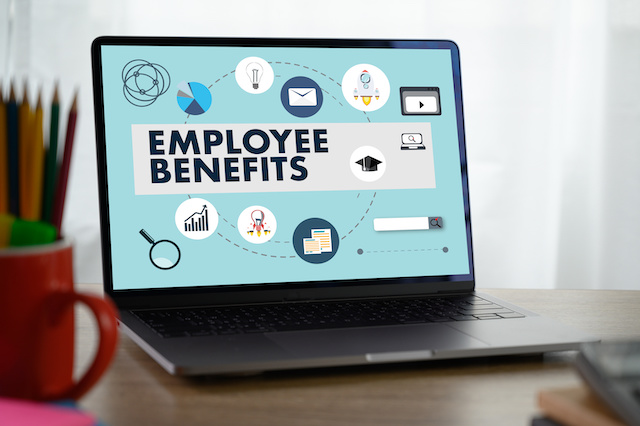Employee benefits play a crucial role in attracting, retaining, and motivating top talent in any organization. However, the effectiveness of these benefits heavily depends on how much they address the needs of your workforce and how well they are communicated to your employees. In this blog post, we will explore the significance of employee benefits communication, five effective ways to communicate benefits, and strategies to leverage these benefits for both recruitment and employee retention purposes.
Why Is Employee Benefits Communication Important for Retention?
Effective communication of employee benefits goes beyond simply listing the perks on a company website or during the onboarding process. It involves actively engaging employees, ensuring they understand the value of the benefits offered, and addressing any questions or concerns they may have. Here are seven reasons why employee benefits communication is crucial for retention.
1. Enhances employee satisfaction and engagement
When employees fully comprehend the range of benefits available to them, they are more likely to feel valued by the organization. This sense of value can lead to increased job satisfaction and higher levels of employee morale. Also, healthy and motivated employees are happier employees. Encouraging them to take advantage of not only medical benefits, but mental health offerings, time off, career development programs, and perks like tuition reimbursement and gym discounts can boost their overall well-being.
2. Fosters a positive company culture
Informative benefits communication—when made available and transparent to the entire workforce—fosters a positive company culture where every employee feels cared for and supported both personally and professionally. This, in turn, creates an environment where employees are motivated to stay with the organization for the long term.
3. Reduces turnover
Employees are more likely to leave a company if they are unaware of the benefits they are entitled to. Effective communication ensures that employees are aware of the full spectrum of benefits, reducing the likelihood of them seeking opportunities elsewhere due to perceived gaps in compensation and perks.
4. Builds trust and loyalty
When employees perceive that the company is invested in their well-being and future, trust and loyalty are built. Transparent communication regarding benefits demonstrates that the organization is committed to the holistic growth and development of its workforce.
 5 Ways to Communicate Employee Benefits at Work
5 Ways to Communicate Employee Benefits at Work
1. Onboarding meetings and materials
Introduce new hires to the company’s benefits package as a core component of the onboarding process. Clearly explain each benefit, its value, and how to take advantage of it. Provide written materials and show where to find the links, phone numbers, and applications in company folders and/or on the website. Offer one-on-one sessions to address questions if needed.
2. Regular workshops and seminars
Conduct workshops and seminars dedicated to employee benefits. Hold these events annually before any required enrollment deadlines and whenever a new benefit is added or changed. Because employees will join your organization throughout the year, it may benefit your workforce to hold these workshops more than once a year. If possible, offer multiple sessions so that employees can find a time to attend that works within their schedule. Cover various benefits in depth, explaining how they work and the advantages they offer. Encourage open discussions and address questions during these sessions, but also let employees know that they can speak with an HR or benefits representative privately afterward or whenever they have questions.
3. Digital platforms
Create a user-friendly digital platform, such as an intranet or a dedicated benefits portal, where employees can access comprehensive information about their benefits. Include downloadable resources, FAQs, and contact information for benefits-related inquiries. Having a single entry point for all resources that employees can self-service on their own time can increase the benefits’ usage.
4. Emails
Send out emails or notifications to employees reminding them of upcoming enrollment periods, communicating employee benefits that have been added or changed, and making known all available resources. Use clear and concise language to ensure that the information is easily understandable.
5. Manager training
Train managers to effectively communicate benefits to their team members. Managers should be well-versed in the benefits offered, allowing them to answer questions and provide guidance. This direct communication from managers enhances trust and engagement. Also, managers who are made aware of any career development programs can encourage their employees to participate in order to improve their skills and advance their careers within the organization. When managers support the use of these benefits, their employees are more likely to take part, which can increase engagement.
 How to Leverage Employee Benefits to Recruit and Retain Employees
How to Leverage Employee Benefits to Recruit and Retain Employees
Beyond just retaining current employees, effective communication of employee benefits can also be a powerful tool for recruiting top talent. Here’s how to leverage benefits for both recruitment and retention.
1. Highlight comprehensive benefits packages during recruitment
When advertising job openings, emphasize the comprehensive benefits package the company offers. Potential candidates are more likely to be drawn to positions that come with competitive compensation, health benefits, retirement plans, career development, and other perks. This gives your company a competitive edge in the job market.
2. Regularly update and remind employees about available benefits
Don’t forget about your employees once they’ve been hired. It’s important to remind them in a regular cadence about the benefits available to them and to encourage employees to participate in them. Do this via email, during all-staff meetings, and through managers in their departmental meetings and one-on-ones. This can boost team members’ enthusiasm for their employer.
3. Showcase success stories
Share stories of how employees have benefited from the company’s offerings. This could be in the form of testimonials, case studies, or short videos. Authentic success stories provide potential candidates with a tangible understanding of how the benefits positively impact employees’ lives. For example, when a team member who has participated in a career development program is promoted, it’s important for other employees to know that growth opportunities are available to them, too. This type of information is also worth sharing on your company’s career page to help attract talent.
4. Utilize social media and the company website
Leverage your company’s social media platforms and website to showcase the range of benefits you provide. Engaging visuals, informative blog posts, and interactive content that show how current employees use and benefit from the offerings can effectively convey the value of working for your organization and help recruit more candidates.
5. Tailor benefits to employee needs
To attract and retain diverse talent, consider offering a range of benefits that cater to different needs. For instance, younger employees might value professional development opportunities, while those with families might prioritize parental leave and childcare assistance. Surveys can be helpful in gaining an understanding of the needs of your workforce and whether you are currently fulfilling them. Also, look to see what other organizations in your field are offering so that you can be competitive to win top talent.
6. Collect and respond to feedback
Regularly gather feedback from employees about their experience with the benefits program. Use this feedback to make improvements and adjustments that align with employee needs and preferences. This demonstrates your commitment to continuously enhancing their experience.
Conclusion
In the modern workplace, employee benefits are a significant factor influencing both recruitment and retention. However, their impact is maximized when they are effectively communicated and tailored to meet employee needs. To fully leverage employee benefits, organizations must not only provide a comprehensive package but also ensure that employees are well-informed about their options. By understanding how to communicate benefits to employees, companies can create a work environment that attracts, retains, and nurtures top talent. In every stage of the employee lifecycle, INTOO helps employers protect their brand through effective candidate experience, career development, and outplacement services. Contact us to learn how we can make a difference for you and your employees.
Robyn Kern is a seasoned business writer who has written in the HR, education, technology, and nonprofit spaces. She writes about topics including outplacement, layoffs, career development, internal mobility, candidate experience, succession planning, talent acquisition, and more, with the goal of surfacing workforce trends and educating the HR community on these key topics. Her work has been featured on hrforhr.org and trainingindustry.com.


 5 Ways to Communicate Employee Benefits at Work
5 Ways to Communicate Employee Benefits at Work How to Leverage Employee Benefits to Recruit and Retain Employees
How to Leverage Employee Benefits to Recruit and Retain Employees








